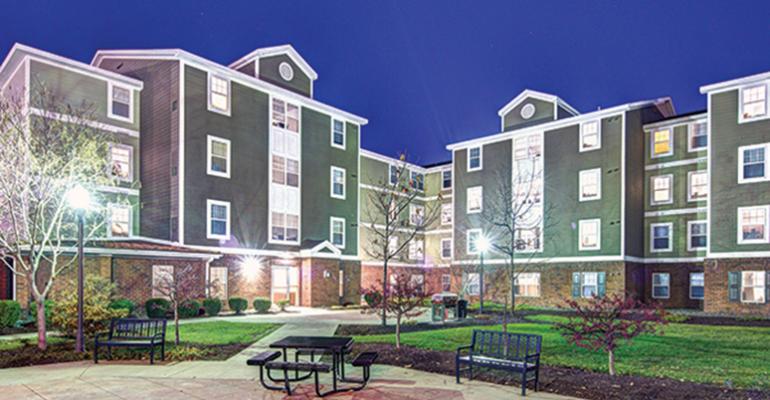Investors are still looking for opportunities to buy student housing properties.
“Many are waiting on the sidelines for the right deals to unload billions in capital within the near future,” says Dorothy L. Jackman, executive managing director of the national student housing group with real estate services firm Colliers International.
Despite some worries about overbuilding, real estate investors remain drawn to the sector. However, they have become more demanding and are taking the time to find just the right deals that fit in with their criteria.
“The buyer’s discipline in purchases has grown over the year,” says Jaclyn Fitts, director of the national student housing team with real estate services firm CBRE. “I anticipate this discipline being the new normal.”
Investors still spending on student housing
In the last weeks of December 2018, investors are still rushing to close deals to buy student housing properties before the year close. They are on track to spend more than $11 billion to buy student housing properties in 2018, according to experts interviewed for this story. That’s significantly more than the $8.1 billion in deals that closed in 2017.
That total will be inflated by one giant transaction—Greystone’s $4.6 billion purchase of the real EdR. However, aside from that deal, investors largely stayed away from portfolios this year, according to Fitts. That’s in part because many large student housing portfolios have already changed hands over the past few years. “There are less assets to aggregate,” says Fitts.
However, student housing continues to attract new investors. “We expect the number of investors targeting student housing as an asset class to further grow in 2019,” says Fred Pierce, president and CEO of Pierce Education Properties, an investment and development firm that specializes in student housing. “Institutions increasingly seek to allocate a portion of their real estate portfolios to recession-resistant asset classes less correlated with the economy in the face of an oncoming recession.”
For example, nearly a dozen potential buyers submitted offers to buy University View, in College Park, Md., according to Fitts, who helped arrange the transaction. That’s three times as many offers as the property had received the last time that it sold, just two years ago in 2016. The sale of the 1,573-bed student housing high-rise next to the University of Maryland closed in November 2018 for $235 million.
Student housing markets strong overall
On average, student housing properties still have few empty beds and rents continue to grow. However, the markets around several universities are challenged because too many new projects have opened. “There are markets that are overdeveloped, but overall there is very little distress,” says Fitts.
Many of these markets seem likely to strengthen in 2019. Developers are expected to open fewer than 40,000 new student housing beds for the school year that begins in the fall of 2019, according to data from research firm Axiometrics. That would be the lowest amount of new development since 2011, and more than a third less than the 62,000 new beds that developers opened in the peak year of 2014.
“This slower pace of new construction (in most markets) should allow those markets to strengthen in the coming year,” says Pierce.
Some investors may take advantage of the overbuilding, he adds. “That is creating short-term opportunities to purchase under-performing assets in affected markets, particularly where the over-supply is projected as a short-term issue.”
Higher yields
Student housing is still attractive to investors, though not for the same reasons as earlier in the recovery.
“Now the investment thesis is that you like the diversification,” says Fitts. “It is less about the yield.”
That said, sellers still accept cap rates 15 to 25 basis points higher for student housing properties compared to multifamily properties in general, according to CBRE.
“Yields in the student housing market are still one of the strongest throughout commercial real estate product types,” says Jackman.
“Student housing does typically still produce a higher yield (both cap rate and IRR) than conventional multifamily investments. However, the spread in recent years has certainly narrowed,” adds Pierce.




